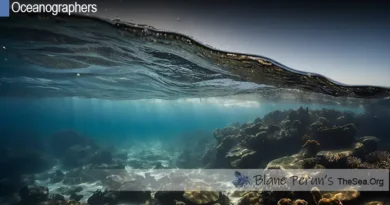How Do Oceanographers Measure The Salinity Of Ocean Water
Unveiling the Saline Secrets: Oceanographers’ Tools for Measuring Ocean Salinity
Have you ever wondered how scientists figure out how salty the ocean is? The process isn’t as simple as tasting the water, that’s for sure! The salinity of ocean water is a crucial factor that influences marine life, climate patterns, and even global ocean circulation. Oceanographers have developed sophisticated methods to measure this salinity, ensuring accuracy and reliability. Let’s dive into the world of oceanography and explore the techniques and tools used in this intriguing scientific endeavor.
The Essence of Salinity in Oceanography
Traditional Conductivity Measurements
One of the cornerstone methods oceanographers use involves measuring the conductivity of seawater. Salinity affects how well water can conduct electricity, with saltier water being a better conductor. Instruments called CTDs (Conductivity, Temperature, and Depth sensors) are deployed from research vessels or buoys to collect data. These sensors measure the electrical conductivity of water, which is then converted into salinity units, typically parts per thousand (ppt).
Cutting-Edge Refractometry Techniques
Refractometry is another fascinating approach. This method is based on the principle that the salinity of water alters its refractive index – basically, how much it bends light. Specialized devices, known as refractometers, shine light through a water sample and measure the angle of refraction. The data gathered provides scientists with another accurate measure of the ocean’s salinity, complementing conductivity-based readings.
Innovations in Salinity Measurement
Satellite Remote Sensing
The advent of satellite technology has revolutionized how we understand the Earth’s oceans. Satellites equipped with microwave radiometers can detect slight variations in the ocean’s surface salinity. These high-tech eyes in the sky provide a global perspective, allowing scientists to monitor large-scale salinity patterns and their impact on climate phenomena like El Niño.
Autonomous Underwater Vehicles
Underwater drones, also known as Autonomous Underwater Vehicles (AUVs), are the unsung heroes of oceanography. These remotely operated or autonomous crafts carry sensors similar to those on CTDs, but they can go where ships cannot. AUVs can gather salinity data from beneath ice-covered regions or in hazardous environments, offering insights into previously inaccessible parts of the ocean.
The Role of Salinity in Ocean Dynamics
Understanding Ocean Circulation
Salinity, together with temperature, drives the global conveyor belt of ocean circulation. This massive, slow-moving current plays a key role in regulating the Earth’s climate. By measuring salinity, oceanographers can predict changes in this circulation pattern, which has implications for weather forecasting, climate change studies, and even fish migration patterns.
Monitoring Ecosystem Health
Salinity levels are also crucial for marine ecosystems. Sudden changes can stress or harm marine organisms, particularly those in sensitive environments like coral reefs or estuaries. By tracking salinity, scientists can gauge the health of these ecosystems, monitor the impact of freshwater influx from rivers or melting ice, and take conservation actions if necessary.
In conclusion, the methods and tools used by oceanographers to measure the salinity of ocean water are as diverse as they are sophisticated. From the traditional to the high-tech, each technique plays a crucial role in enhancing our understanding of the world’s oceans. As we continue to explore and study this vital aspect of oceanography, we unlock new insights into the health of our planet and the intricate systems that govern its climate and ecosystems.
FAQs on Measuring Ocean Salinity
1. Why is it important to measure the salinity of ocean water? Measuring the salinity of ocean water is vital for understanding and predicting ocean circulation patterns, which affect global climate and weather systems. It also helps scientists assess the health of marine ecosystems and the impact of environmental changes such as melting ice caps and freshwater influx.
2. How does a CTD device work? A CTD device measures the Conductivity, Temperature, and Depth of ocean water. Conductivity is related to salinity because saltier water conducts electricity better. The device sends electrical signals through the water, and by measuring how well the water conducts these signals, scientists can calculate its salinity.
3. What is the role of satellite remote sensing in measuring ocean salinity? Satellite remote sensing allows scientists to measure the salinity of the ocean’s surface on a global scale. Using microwave radiometers, satellites can detect slight variations in salinity across vast areas, helping to map large-scale salinity patterns and their impact on climate and ocean circulation.
4. Can salinity affect marine life? Yes, salinity levels are critical for marine life. Many marine organisms are adapted to specific salinity ranges, and sudden changes can cause stress or even be lethal. Understanding and monitoring salinity helps protect sensitive habitats and ensure the sustainability of marine ecosystems.
5. How do Autonomous Underwater Vehicles contribute to salinity measurement? Autonomous Underwater Vehicles (AUVs) can carry salinity sensors into areas that are difficult or dangerous for ships to navigate, such as under ice shelves or in stormy seas. This capability allows scientists to collect salinity data from previously inaccessible parts of the ocean, providing a more complete understanding of oceanic salinity patterns.




